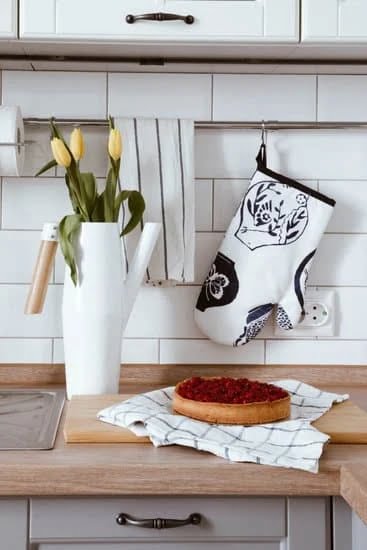Are you ready to learn how to decorate cake with fondant icing? Fondant is a versatile and popular choice for decorating cakes, creating a smooth and sleek finish that allows for intricate designs and decorations. In this article, we will explore the world of fondant icing, including its history and origin, as well as tips and techniques for working with fondant to create stunning cake decorations.
Fondant icing is a type of sugar paste that can be rolled out into a smooth sheet and draped over a cake for a flawless finish. Its origins can be traced back to ancient civilizations, where it was used for decorative purposes. Today, fondant has become a staple in the world of cake decorating, allowing bakers and decorators to unleash their creativity and bring their artistic visions to life.
Before diving into the art of decorating with fondant, it’s crucial to start with the right cake. Not all cakes are suitable for fondant icing, so we will discuss the best types of cakes to use with fondant and offer valuable tips for preparing the cake to ensure success when working with fondant.
Whether you’re a beginner or an experienced baker looking to sharpen your skills, our guide will provide you with all the information you need to get started on your fondant decorating journey.
Choosing the Right Cake for Fondant
When it comes to decorating a cake with fondant icing, it’s essential to choose the right type of cake as not all cakes are suitable for this purpose. The best cakes to use with fondant are those that are sturdy and dense, such as sponge cake, butter cake, or mud cake. These types of cakes provide a solid base for the fondant and can hold its weight without collapsing or becoming misshapen.
Before applying fondant to the cake, it’s crucial to properly prepare the surface. This involves ensuring that the cake is level and free from any crumbs or imperfections on the icing. To achieve a smooth surface for the fondant, you may need to trim any uneven edges from the cake using a serrated knife and lightly coat the exterior with a layer of frosting or apricot glaze.
To prevent the fondant from sticking to your work surface when rolling it out, you can dust your countertop or rolling pin lightly with powdered sugar or cornstarch. Additionally, lifting and rotating the fondant while rolling will help ensure that it doesn’t adhere to your work surface. Always roll out the fondant evenly in all directions to achieve a uniform thickness before applying it to your prepared cake.
| Best Cakes for Fondant | Tips for Preparing Cake |
|---|---|
| Sponge cake | Ensure level surface for frosting |
| Butter cake | Trim uneven edges before applying fondant |
| Mud cake | Lightly coat with frosting or apricot glaze |
Working With Fondant
When it comes to decorating cakes, fondant icing offers a smooth and polished finish that is perfect for creating elaborate designs and decorations. Before you can start creating beautiful fondant decorations, it’s important to understand the basics of working with fondant.
Tips for Handling and Rolling Out Fondant
– Start with a clean and dry work surface to prevent sticking.
– Dust your work surface and rolling pin with powdered sugar or cornstarch to prevent sticking.
– Knead the fondant before rolling it out to make it more pliable and easier to work with.
How to Prevent Fondant From Sticking
– Use a thin layer of shortening on your hands, work surface, and rolling pin to prevent sticking.
– Lift and reposition the fondant frequently as you roll it out to avoid sticking.
Coloring fondant allows you to create vibrant and customized decorations for your cakes. Whether you’re looking for pastel shades or bold hues, there are several techniques for coloring fondant.
1. Gel Food Coloring: Add small amounts of gel food coloring at a time until you achieve the desired shade.
2. Powdered Food Coloring: Mix small amounts of powdered food coloring into white fondant until evenly colored.
3. Airbrushing: Use an airbrush machine and airbrush color to evenly coat the surface of the fondant.
How to Achieve Different Shades and Hues
– To achieve lighter shades, simply add small amounts of color gradually.
– For deeper colors, include more gel or powdered food coloring until you reach the desired hue.
With these tips in mind, you’ll be well-equipped to tackle basic decorating techniques using colored fondant while avoiding common mistakes.
Coloring Fondant
When it comes to decorating cakes with fondant icing, one of the most important aspects to consider is the coloring of the fondant. Achieving the perfect color for your fondant decorations can truly elevate the overall look of your cake. Here are some techniques for coloring fondant and how to achieve different shades and hues:
Techniques for Coloring Fondant:
1. Using Gel Food Coloring: Gel food coloring is the best option for tinting fondant as it does not add additional liquid to the mixture, which could alter the consistency of the fondant. Simply add a small amount of gel food coloring to your white fondant and knead it until the color is evenly distributed.
2. Airbrushing: For a more professional and seamless finish, you can use an airbrush machine to color your fondant. This technique allows you to create gradient effects and intricate designs on your cake.
3. Layering Colors: To achieve unique shades and hues, consider layering different colors of fondant on top of each other and then rolling them out together. This will create a marbled effect that adds depth and dimension to your cake decorations.
How to Achieve Different Shades and Hues:
– For pastel colors, start with a smaller amount of gel food coloring and gradually add more as needed.
– To create deeper and richer colors, use a larger amount of gel food coloring or mix in additional color combinations.
With these techniques for coloring fondant, you can take your cake decorating skills to the next level and create stunning masterpieces that are sure to impress at any celebration or event.
Decorating Techniques
When it comes to decorating a cake with fondant icing, there are a variety of techniques that can be used to create beautiful and professional-looking designs. Whether you’re a beginner or have some experience with fondant, mastering these decorating techniques will take your cake decorating skills to the next level.
One of the most popular techniques for decorating with fondant is using cut-out shapes and designs. This involves rolling out the fondant and using shaped cutters to create various designs such as flowers, hearts, stars, or even intricate patterns. These cut-outs can then be placed on the cake to create a visually appealing design.
Another technique for decorating with fondant is called embossing. This involves using special tools to create raised or indented patterns on the surface of the fondant. These patterns can add texture and visual interest to the cake, and can range from simple geometric designs to elaborate motifs.
For those looking to take their fondant decorating skills to the next level, 3D sculpting is an advanced technique that allows for creating intricate figurines, characters, or objects out of fondant. While this technique requires some skill and practice, it can result in stunning and impressive cake decorations that are sure to impress any party guest.
These are just a few examples of the many decorating techniques that can be used when working with fondant icing. By mastering these techniques and experimenting with different designs, colors, and textures, you can create beautifully decorated cakes that look like they came straight from a professional bakery.
Tools and Supplies
When it comes to decorating a cake with fondant icing, having the right tools and supplies can make all the difference in the final result. Essential tools for working with fondant include a rolling pin, fondant smoother, sharp knives or pizza cutters, and various shaping and modeling tools. These items are essential for handling and shaping the fondant to create intricate designs and decorations on your cake.
In addition to the tools, there are also specific supplies that are recommended for successful fondant decorating. These supplies include a non-stick silicone mat or non-stick work surface to roll out the fondant, as well as cornstarch or powdered sugar for dusting to prevent sticking. It is important to have these supplies on hand to ensure that the fondant does not stick to surfaces and can be easily manipulated into different shapes and designs.
Another critical supply for working with fondant is food coloring gel or paste. These concentrated forms of food coloring are essential for achieving vibrant and consistent colors in your fondant. By using gel or paste instead of liquid food coloring, you can prevent the fondant from becoming too sticky while still achieving bold and beautiful shades.
Whether you are a beginner or an experienced baker, having the right tools and supplies is crucial for successful fondant decorating. By investing in quality equipment and materials, you can elevate your cake decoration skills and create stunning designs with fondant icing.
Common Fondant Decorating Mistakes
Avoiding Cracks and Tears in Fondant
One of the most common issues when working with fondant is the occurrence of cracks and tears. This can happen when rolling out the fondant or when placing it on the cake. To prevent this, make sure your work surface is clean and lightly dusted with confectioner’s sugar or cornstarch to prevent sticking.
When rolling out the fondant, use an even pressure and roll in all directions to create an even thickness. When placing it on the cake, smooth out any air bubbles by gently pressing with your hands or a cake smoother.
How to Fix Common Fondant Decorating Problems
Despite our best efforts, sometimes mistakes happen while decorating a cake with fondant. If you encounter cracks or tears in the fondant, you can try to gently smooth them out using a small amount of vegetable shortening on your fingertips. Another solution is to strategically cover any imperfections with additional decorations like flowers or designs made from extra fondant. If the issue is extensive, removing the fondant and starting over may be necessary.
Troubleshooting Common Fondant Decorating Challenges
In addition to cracks and tears, other common challenges when working with fondant include elephant skin (wrinkling), sweating, and color bleeding. Elephant skin can occur if the fondant dries out too quickly while working with it. To fix this issue, lightly misting the surface of the cake or adding a thin layer of piping gel before applying the fondant can help.
Sweating happens when condensation forms on the surface of the cake due to temperature changes – to avoid this, make sure that your cake has come to room temperature before covering it with fondant. As for color bleeding, this can be prevented by allowing colored fondants to set for at least 24 hours before using them on a cake.
Tips for Success
Pro Tips for Achieving Professional-Looking Fondant Decorations
To achieve professional-looking fondant decorations, it’s important to start with a smooth and evenly iced cake. Proper preparation of the cake surface will make it easier to apply the fondant smoothly and without any bumps or imperfections. It’s also crucial to roll out the fondant evenly and to the right thickness for the best results.
Another pro tip is to use a flexible measuring tape or ruler to measure the diameter and height of your cake before rolling out the fondant. This will ensure that you roll out enough fondant to cover the entire cake without coming up short or having excess that needs to be trimmed off.
Troubleshooting Common Fondant Decorating Challenges
One common challenge when working with fondant is air bubbles forming beneath the surface. To prevent this, gently smooth out the fondant as you lay it over the cake, starting from the top and working your way down the sides. If air bubbles do form, simply use a small pin to prick them, then smooth over the area again.
When smoothing out fondant on your cake, if you notice any tears or cracks, use a small amount of vegetable shortening on your fingertips to gently rub over the affected area. This often helps to blend and smooth out minor imperfections, leaving your cake looking flawless once again.
Avoiding Over-Drying Fondant
It’s important not to leave rolled-out fondant uncovered for too long, as it can dry out and become difficult to work with. To prevent this, cover any unused fondant with plastic wrap and place it in an airtight container while you work on decorating your cake.
Additionally, if you find that your hands are sticking to the fondant while working with it, lightly dust them with powdered sugar instead of flour – this will prevent drying out of the fondant while keeping it pliable for shaping and decorating.
Conclusion
In conclusion, decorating cakes with fondant icing can be a fun and rewarding experience for both beginner and experienced bakers. Fondant icing offers a smooth and polished look to cakes, making them perfect for special occasions such as weddings, birthdays, and anniversaries. By following the tips provided in this article on handling, coloring, and decorating with fondant, anyone can create beautiful and professional-looking designs on their cakes.
It’s important to remember that choosing the right cake for fondant is crucial to the success of your decoration. A dense and firm cake works best with fondant, as it provides a stable base for the icing. Additionally, properly preparing the cake by leveling it and applying a thin layer of buttercream will ensure that the fondant adheres smoothly and securely.
When it comes to working with fondant, patience is key. Taking the time to handle and roll out the fondant carefully, while also preventing it from sticking by using cornstarch or powdered sugar, will result in a flawless finish on your cake. By following these techniques for working with fondant and avoiding common mistakes like cracks and tears, you’ll be well on your way to creating stunning designs on your cakes.
Ultimately, don’t be afraid to experiment with different colors, designs, and techniques when decorating with fondant. The possibilities are endless when it comes to creating unique and beautiful decorations for your cakes. So go ahead and try your hand at decorating cake with fondant icing – you may just discover a new passion for baking and decorating.
Frequently Asked Questions
How Do You Use Fondant on a Cake for Beginners?
Using fondant on a cake for beginners involves rolling out the fondant to the desired thickness, carefully lifting it over the cake, and smoothing it down to cover the entire surface. It’s important to work slowly and gently to avoid tears or creases in the fondant.
How Do You Attach Fondant Icing to a Cake?
To attach fondant icing to a cake, you can lightly brush the surface of the cake with simple syrup, water, or a thin layer of buttercream frosting. This provides a slightly sticky surface for the fondant to adhere to. Then, carefully lift and drape the fondant over the cake before smoothing it down.
Can You Put Fondant Directly on a Cake?
Yes, you can put fondant directly on a cake. However, it’s important to ensure that the cake is smooth and level so that the fondant will lay flat. Some bakers prefer to apply a thin layer of buttercream frosting first as it helps the fondant stick better and provides a smooth base for attaching decorations.

Welcome to our cake decorating blog! My name is Destiny Flores, and I am the proud owner of a cake decorating business named Cake Karma. Our mission is to provide delicious, beautiful cakes for all occasions. We specialize in creating custom cakes that are tailored specifically to each customer’s individual needs and tastes.





